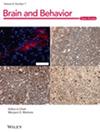Infralimbic GABAergic May be the Target of Asiaticoside on Alleviating Bone Cancer Pain
Abstract
Purpose
Bone cancer pain (BCP), characterized by neuropathic and inflammatory components due to bone metastasis and immune responses, remains a significant clinical challenge. Asiaticoside (AS), an active compound derived from Centella asiatica, exhibits diverse pharmacological properties and holds promise for BCP treatment. In this study, we investigated the mechanisms underlying AS-mediated pain relief.
Methods
By analyzing the expression of the activity-induced immediate-early gene c-Fos and performing whole-brain mapping to identify activated regions after the treatment of AS. Chemogenetic approaches were employed to selectively activate or inhibit glutamatergic and GABAergic neurons in the IL region.
Results
Our findings revealed that the infralimbic cortex (IL) plays a critical role in AS-induced analgesia. Further analysis demonstrated that GABAergic neurons, rather than glutamatergic neurons, were predominantly activated in the IL region, suggesting their involvement in pain alleviation. Moreover, AS significantly alleviated BCP by activating GABAergic neurons, while their inhibition attenuated the analgesic effect. In contrast, modulation of glutamatergic neurons had no significant impact on pain relief. These findings indicate that GABAergic neurons in the IL are essential for the antinociceptive effects of AS.
Conclusions
In conclusion, our study demonstrates that AS alleviates BCP by selectively targeting GABAergic neurons in the infralimbic cortex, providing a potential therapeutic strategy for managing BCP. This work highlights the importance of GABAergic signaling in pain modulation and offers new insights into the development of targeted therapies for cancer-induced pain.


 求助内容:
求助内容: 应助结果提醒方式:
应助结果提醒方式:


